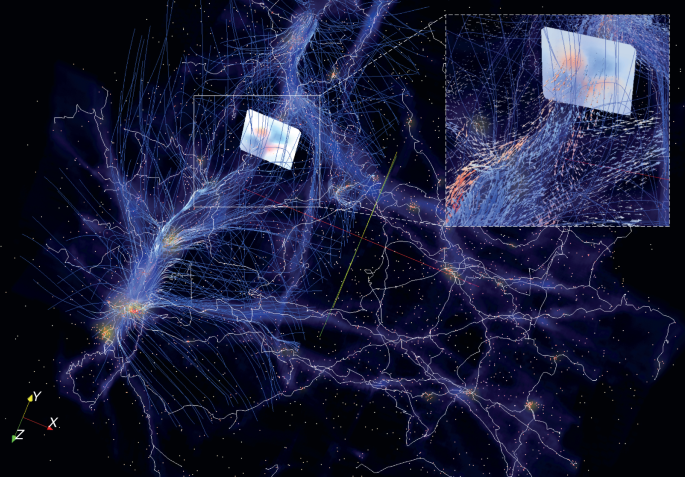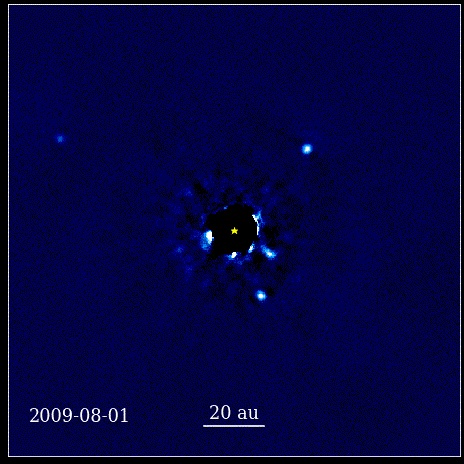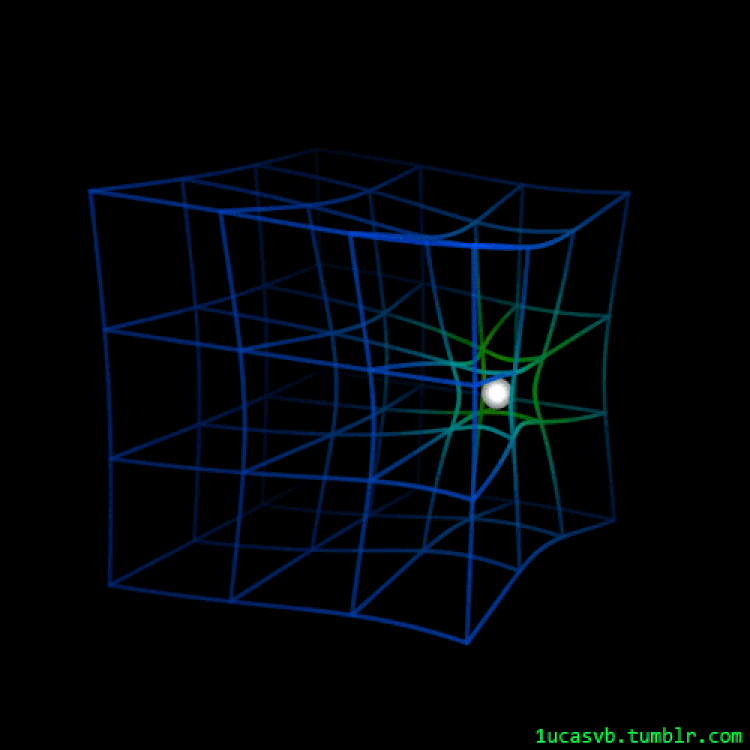Why is “F = ma” still the most important equation in physics?

- What seems like a simple, three-letter equation contains an enormous amount of information about our Universe.
- The physics within it is vital for understanding all of motion, while the mathematics is the most important application of calculus to our reality.
- By thinking about it properly, this equation can even lead us to relativity, and remains eternally useful to physicists of all levels.
If there’s one equation that people learn about physics — and no, not Einstein’s E = mc² — it’s Newton’s F = ma. Despite the fact that it’s been in widespread use for some ~350 years now, as that’s how much time has elapsed since Newton first put it forth in the late 17th century, it rarely makes physicists’ lists of most important equations. Yet it’s the one equation that physics students learn more than any other at the introductory level, and it remains important at every level as we advance:
- through our undergraduate educations,
- through graduate school,
- among physics and engineering professionals,
and even when we move on to rocket science, calculus, and some very intense, advanced, and esoteric concepts.
F = ma, despite its apparent simplicity, keeps on delivering new insights to those who study it, just as it’s done for centuries. Part of the reason why it’s so undervalued is because it’s so widespread. After all, if you’re going to learn anything about physics, you’re going to learn about Newton, and this very equation is the key statement of Newton’s second law. In addition, it’s just three parameters — force, mass, and acceleration — related through an equals sign. While it might seem like there’s very little to it, the truth is that there’s a fantastic world of physics that opens up when you investigate the depths of F = ma. Let’s unpack the shocking depths of this simple-looking equation.

Credit: NASA/International Space Station
The first time you encounter an equation like F = ma, it’s tempting to treat it the same way you’d treat an equation for a line in mathematics. Additionally, it seems like it’s even a little bit simpler: Instead of an equation like y = mx + b, for instance, which is the classic math formula for a line, there’s no “b” in there at all.
Why is that?
Because this is physics, not mathematics. We only write down equations that are physically consistent with the Universe, and any b that isn’t zero would lead to pathological behavior in physics. Remember that Newton put forth not one, but three laws of motion, which describe all bodies as follows:
- An object at rest remains at rest and an object in motion remains in constant motion, unless acted upon by an outside force.
- An object will accelerate in the direction of whatever net force is applied to it, and will accelerate with a magnitude of that force divided by the object’s mass.
- Any action — and a force is an example of an action — must have an equal and opposite reaction. If anything exerts a force on any object, that object exerts an equal and opposite force on the “thing” that pushes or pulls it.
The first law is the reason that the equation is F = ma and not F = ma + b, because otherwise objects could not remain in constant motion in the absence of outside forces. Therefore, the “b” you could theoretically write down for this equation must be equal to 0.

This equation, then, F = ma, has three meanings associated with it, at least in a physical sense. Even before we look at the details of what a force, a mass, or an acceleration even means, we can look at this equation from three different perspectives.
- If you can measure the mass of your object and how it’s accelerating, you can use F = ma to determine the net force acting on the object.
- If you can measure the mass of your object and you know (or can measure) the net force being applied to it, you can determine how that object will accelerate. (This is particularly useful when wanting to determine how an object will accelerate under the influence of gravity.)
- If you can measure or know both the net force on an object and how it’s accelerating, you can use that information to determine your object’s mass.
Any equation with three variables connected like this — where one variable is on one side of the equation and the other two are multiplied together on the other side — behaves exactly as such. Other famous examples include Hubble’s law for the expanding Universe, which is v = Hr (the recession speed equals the Hubble constant multiplied by distance), and Ohm’s Law, which is V = IR (voltage equals current multiplied by resistance).
We can think of F = ma in two other ways that are equivalent: F/m = a and F/a = m. Although it’s only algebraic manipulation to get these other equations from the original, it’s a useful exercise in teaching introductory students to solve for an unknown quantity using the physical relationships and the known quantities we possess.

Credit: rmathews100/Pixabay
Now, however, we can move on to some more advanced thoughts. The way to take F = ma to the next level is simple and straightforward, but also profound: it’s to realize what acceleration means from a physical perspective. An acceleration is a change in velocity (v) over a time (t) interval, and this can either be an average acceleration, such as taking your car from 0 to 60 mph (approximately the same as going from 0 to 100 kph), or an instantaneous acceleration, which asks about your acceleration at one particular moment in time. We normally express this as a = Δv/Δt, where the “Δ” symbol stands for a change between a final and an initial value, or as a = dv/dt, where the “d” denotes an instantaneous change.
Similarly, velocity itself is a change in position (x) over time, so we can write v = Δx/Δt for an average velocity, and v = dx/dt for an instantaneous velocity. The relationship between position, velocity, acceleration, force, mass, and time is profound — it’s one that scientists puzzled over for decades, generations, and even centuries before the very basic equations of motions were successfully written down in the 17th century.
In addition, you’ll notice that some of the symbols we’ve been using have been bolded: x, v, a, and F. That’s because they’re not just quantities; they’re quantities with directions associated with them. Given that we live in a three-dimensional Universe, every one of these equations with a “bold” quantity in it is actually three equations: one for each of the three dimensions (e.g., x, y, and z directions) present in our Universe.

Credit: MichaelMaggs Edit by Richard Bartz/Wikimedia Commons
One of the remarkable things about these sets of equations relating positions, velocities, accelerations, and forces is that they’re all independent of one another.
What happens in the x-direction — in terms of force, position, velocity, and acceleration — only affects the other components in the x-direction. The same applies for the y-and-z-directions as well: What happens in those directions only affects those directions. This explains why when you hit a golf ball on the Moon, gravity only affects its motion in the “up and down” direction, not in the side to side direction. The ball will continue on, constantly, with its motion unchanged; it’s an object in motion with no external forces in that direction.
We can extend our understanding of how these motions work in a number of powerful ways.
- Instead of treating objects as though they’re idealized point masses, we can consider masses that are extended objects.
- Instead of treating objects that only move in lines, accelerating at a constant rate in one or more directions, we can treat objects that orbit and rotate, and possess both linear and angular momentum.
- And instead of treating objects in isolation, we can consider multiple different objects within a larger physical system, including objects that can interact with one another.
Through this procedure, we can begin to introduce concepts like torque and moment of inertia, as well as angular position, angular velocity, and angular acceleration. Newton’s laws and equations of motion all still apply here, as everything in this discussion can be derived from that same core equation: F = ma.

Now that we’ve come this far, we’re about to encounter an important physical concept that we’ve been dancing around, but now must take on directly: the concept of a rate. Velocity is the rate at which your position changes. It’s a distance over a time, or a change in distance over a change in time, and that’s why it has units like meters per second or miles per hour. Similarly, acceleration is the rate at which your velocity changes. It’s a change in velocity over a change in time, and that’s why it has units like meters per second per second, or m/s²: because it’s a velocity (meters per second) over a time (per second).
If you know
- where something is right now (its current position),
- what time it is right now (its current timestamp),
- how quickly it’s moving right now (its initial velocity),
- and what forces are and will be acting on it (allowing you, from F = ma, to determine its instantaneous acceleration),
then you can predict how it will move as far into the future as you dare to calculate. That means we can predict where it will be at any point in time, including even arbitrarily large times into the future, as long as we have sufficient computational or calculational power at our disposal. Newton’s equations are entirely deterministic, so if we can measure or know what an object’s initial conditions are at some time, and we know how that object will experience forces over time, we can predict precisely where it will wind up.

Credit: Jason Wang (Northwestern)/William Thompson (UVic)/Christian Marois (NRC Herzberg)/Quinn Konopacky (UCSD)
This is how we predict planetary motion and comet arrivals, assess asteroids for their potential to strike Earth, and plan missions to the Moon. It’s even how we determined the orbit of our newest interstellar interloper: 3I/ATLAS. At its core, F = ma is what we call a differential equation, and a second-order differential equation at that. (Why? Because “second-order” means it has a second time-derivative in there: acceleration is a change in velocity over a change in time, while velocity is a change in position over a change in time.) Differential equations are their own branch of mathematics, and the best descriptions I know of them are twofold:
- A differential equation is an equation that tells you, assuming you know what your object is doing right now, what it will be doing at the very next moment. Then, when that next moment has elapsed, that very same equation tells you what will occur at the subsequent moment, and so on, forward to infinity.
- However, most of the differential equations that exist cannot be exactly solved; we can only approximate them, which involves leveraging numerical and computational methods. Furthermore, most of the differential equations that can be solved cannot be solved by us, and by “us” I mean professional theoretical physicists and mathematicians. These things are hard.
F = ma is one of those very hard differential equations. And yet, the comparatively simple circumstances under which we can solve it are incredibly educational. This fact underlies much of the work that we’ve done in theoretical physics for centuries, a fact that remains true even today.

Credit: LucasVB
Now, we come to what turns out to be a disturbing moment for most people when they first learn about it. It turns out all this time, physics teachers have been telling you a little white lie about F = ma.
What’s the lie?
The equation, F = ma, is something that Newton never wrote or formulated himself. Newton never said, “force equals mass times acceleration.” Instead, he said, “force is the time rate of change of momentum,” where momentum is (classically) the product of mass times velocity.
These two statements are not the same. F = ma tells you that force, which occurs in some direction, leads to an acceleration of masses: a changing velocity over time for every mass that experiences a force. Momentum, which physicists unintuitively (for English speakers) represent with the letter p, is the product of mass times velocity: p = mv.
Can you see the difference? If we change momentum over time, whether it’s with average momentum (Δp/Δt) or with instantaneous momentum (dp/dt), we run into an issue. Writing down F = ma makes the assumption that mass does not change; only velocity changes. This isn’t universally true, however, and the two big exceptions have been hallmarks of 20th-century advances.

Credit: Trevor Mahlmann/Rocket Lab
One is the science of rocketry, since rockets actively lose their mass (burning it and expelling it as exhaust) as they actively accelerate. In fact, the “changing mass, also” version of the equation, where both velocity and mass are allowed to vary over time, is known by many as simply “the rocket equation.” When a loss or gain in mass is occurring, it affects your object’s motion, and how that motion changes over time as well. Without the mathematics of calculus and differential equations, and without the physics of how objects such as this behave in real life, calculating the behavior of a spacecraft powered by propellant would be impossible.
The other is the science of special relativity, which becomes important when objects move close to the speed of light. If you use Newton’s equations of motion, and the equation F = ma to calculate how an object’s position and speed change when you apply a force to it, you can incorrectly calculate conditions that lead to your object exceeding the speed of light. If, however, you instead use F = (dp/dt) as your force law — the way Newton himself wrote it — then so long as you remember to use relativistic momentum (where you add in the Lorentz factor of the relativistic γ: p = mγv), you’ll find that the laws of special relativity, including time dilation and length contraction, all naturally appear.

Credit: John D. Norton/University of Pittsburgh
Many have speculated, based on this observation and the fact that Newton could have easily written F = ma instead of F = (dp/dt), that perhaps Newton actually anticipated special relativity: an assertion that’s impossible to disprove. Others counter this speculation, instead arguing that Newton only anticipated that a changing mass was also a possibility, so decomposing momentum into “m” and “v” and arguing that only the v could change would have been rather silly. However, regardless of what was going on in Newton’s head, it’s undeniable that there’s a tremendous rabbit hole of insight into the workings of our Universe — along with the development of invaluable tools for problem solving — embedded in the seemingly simple equation behind Newton’s second law: F = ma.
The idea of forces and accelerations will come into play every time a particle moves through curved spacetime; every time an object experiences a push, pull, or forceful interaction with another entity; and every time a system does anything other than remain at rest or in constant, unchanging motion. Even though Newton’s F = ma isn’t universally true in all circumstances, its tremendous range of validity, the deep physical insights that it holds, and the interrelationships it encodes across systems both simple and complex ensures its status as one of the most important equations in all of physics. If you’re only going to teach one physics equation to someone, make it this one. With enough effort, you can use it to decode the workings of almost the entire Universe.
This article was first published in December of 2021. It was updated in July of 2025.





